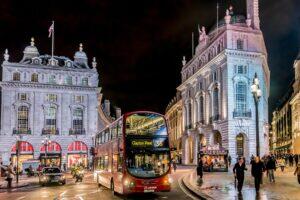Fodor's Expert Review Royal Observatory
Greenwich is on the prime meridian at 0° longitude, and the ultimate standard for time around the world has been set here at the Royal Observatory since 1884, when Britain was the world's maritime superpower. The observatory is actually split into two sites, a short walk apart: one devoted to astronomy, the other to the study of time. The enchanting Peter Harrison Planetarium is London's only planetarium, its bronze-clad turret glinting in the sun. Shows on black holes and how to interpret the night sky are enthralling and enlightening, and there are dedicated shows for young children, too.
Across the way is Flamsteed House, designed by Sir Christopher Wren in 1675 for John Flamsteed, the first Astronomer Royal. The Time Ball atop Flamsteed House is one of the world's earliest public time signals. Each day at 12:55, it rises halfway up its mast. At 12:58 it rises all the way to the top, and at 1 pm exactly, the ball falls. A climb to the top of the house also reveals a 28-inch... READ MORE
Greenwich is on the prime meridian at 0° longitude, and the ultimate standard for time around the world has been set here at the Royal Observatory since 1884, when Britain was the world's maritime superpower. The observatory is actually split into two sites, a short walk apart: one devoted to astronomy, the other to the study of time. The enchanting Peter Harrison Planetarium is London's only planetarium, its bronze-clad turret glinting in the sun. Shows on black holes and how to interpret the night sky are enthralling and enlightening, and there are dedicated shows for young children, too.
Across the way is Flamsteed House, designed by Sir Christopher Wren in 1675 for John Flamsteed, the first Astronomer Royal. The Time Ball atop Flamsteed House is one of the world's earliest public time signals. Each day at 12:55, it rises halfway up its mast. At 12:58 it rises all the way to the top, and at 1 pm exactly, the ball falls. A climb to the top of the house also reveals a 28-inch telescope, built in 1893 and now housed inside an onion-shaped, fiberglass dome. It doesn't compare with the range of modern optical telescopes, but it's still the largest in the United Kingdom. Regular wintertime viewing evenings reveal startlingly detailed views of the lunar surface.
In the Time Galleries, linger over the superb workmanship of John Harrison (1693–1776), whose famous maritime clocks won him the Longitude Prize for solving the problem of accurate timekeeping at sea, paving the way for modern navigation. Don't miss the Camera Obscura, which showcases views down to the river below. Outside, a brass line laid among the cobblestones marks the meridian. As darkness falls, a green laser shoots out, following exactly the path of the meridian line. The hill that is home to the observatory gives fantastic views across London, topped off with £1-a-slot telescopes to scour the skyline.
READ LESS








